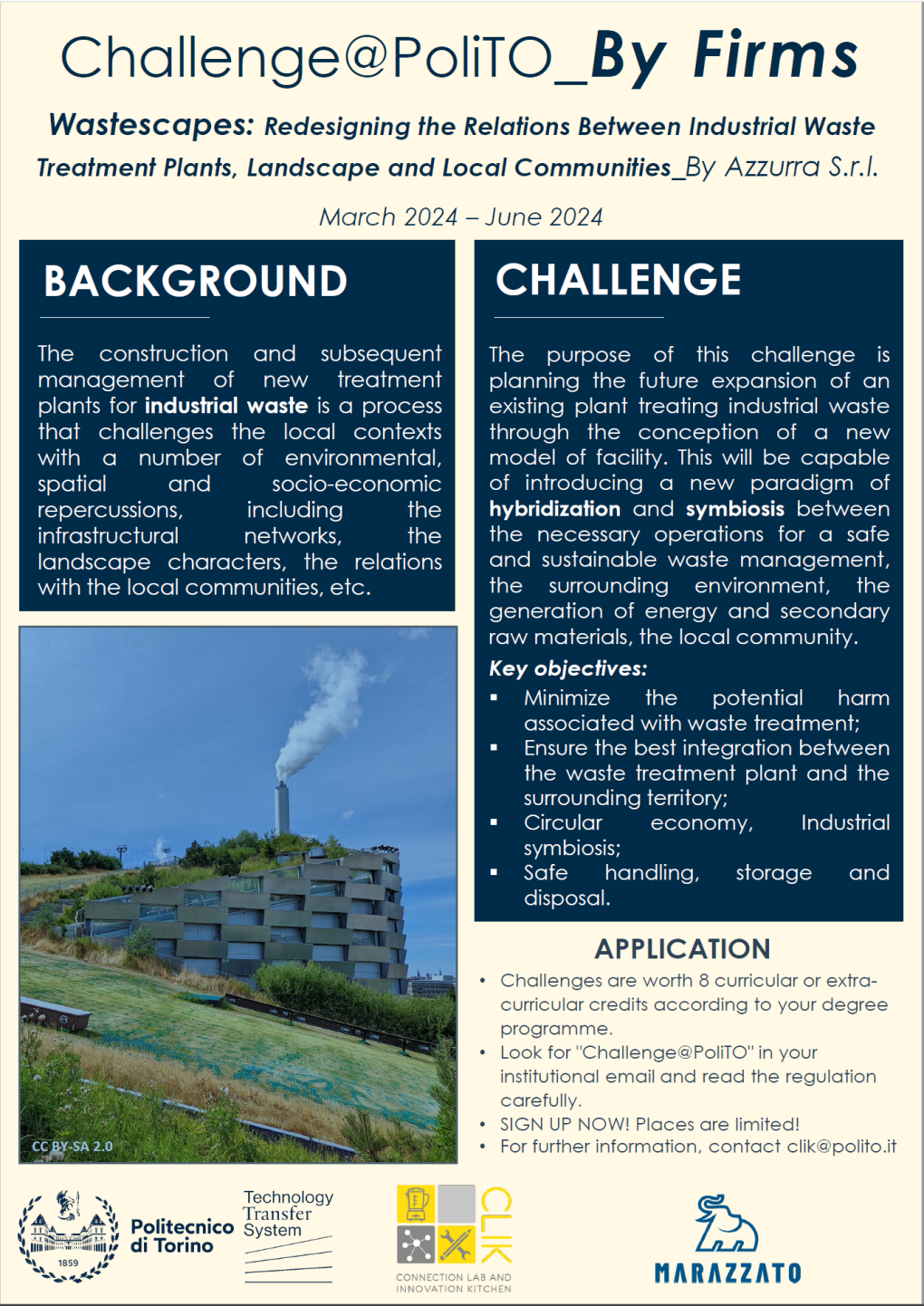Wastescapes
Redesigning the Relations Between Industrial Waste Treatment Plants, Landscape and Local Communities
Challenge@PoliTo by Firms – Azzurra is part of a series of innovative teaching activities for students of Politecnico di Torino, under the lead of Professors M. Berta (DAD) and B. Ruffino (DIATI).

Challenge@PoliTo_by Firms is an innovative teaching activity carried out at the Politecnico di Torino. It is an integral part of the PoliTo’s strategy to promote innovative education and entrepreneurial culture.
These activities are organized with external firms that provide a “challenge” coming from their real business. During the experience, up to 30 master’s students divided into teams work, compete and develop their own solutions.
The Challenges are carried out in an experimental educational laboratory: the CLIK – Connection Lab & Innovation Kitchen, or a similar space. During the challenge phase at the CLIK lab, students can experiment and practice what they have learned during their university courses in an informal and multidisciplinary environment that promotes the spirit of creativity and collaboration.
Challenge@PoliTo by Firms – Azzurra
The Topic
The construction and subsequent management of new treatment plants for industrial waste is a process that challenges the local contexts with a number of environmental, spatial and socio-economic repercussions, including the infrastructural networks, the landscape characters, the relations with the local communities, etc.
The Challenge
The purpose of this challenge is planning the future expansion of an existing facility treating hazardous and non-hazardous industrial waste, starting from the company’s current strategic development plan. The new expansion will be specifically devoted to the treatment of sludge. The project must include the logistic plan inside and outside the plant, the selection and design of equipment, taking into account the operations to be carried out on sludge (inertization, drying, thermal treatment), the assessment of the more critical aspects in order to obtain the necessary permits and authorizations, a preliminary calculation of the costs and revenues of the project.
Specific attention will be paid to the urban and landscape outcomes of the operation. The challenge, from this point of view, is to conceive a new model of facility that could be seen not just as an unavoidably downgrading installation for the local territory but, at the opposite, as an opportunity to introduce new models of hybridization and symbiosis between waste treatment plants, agriculture, energy generation and local community.
Key objectives:
• Minimize the potential harm associated with waste treatment;
• Ensure the best integration between the waste treatment plant and the surrounding territory;
• Circular economy, Industrial symbiosis;
• Safe handling, storage and disposal